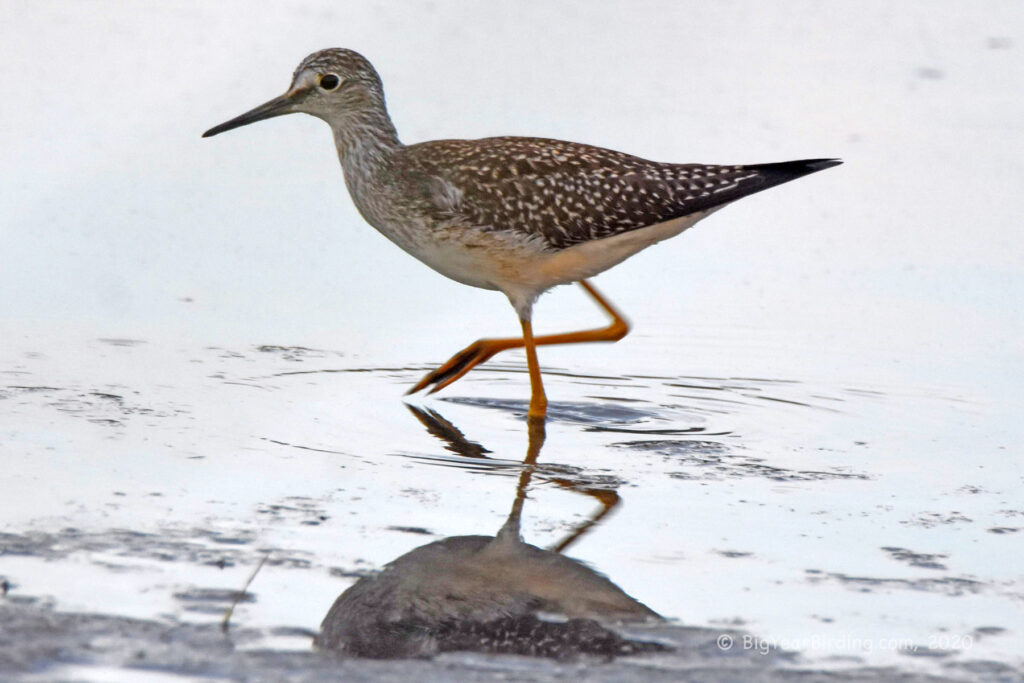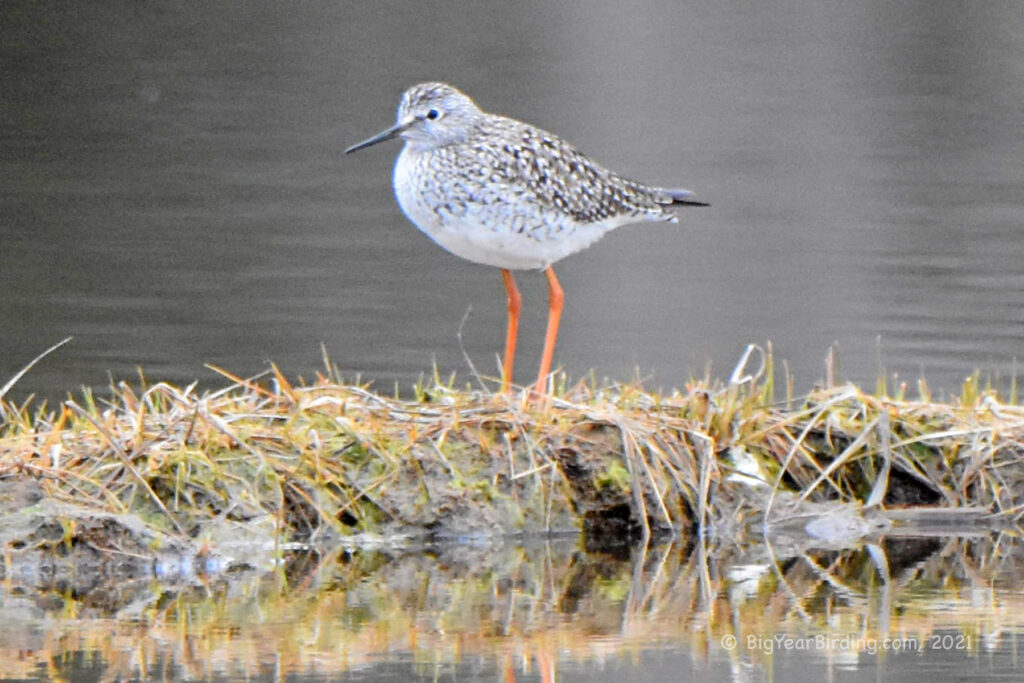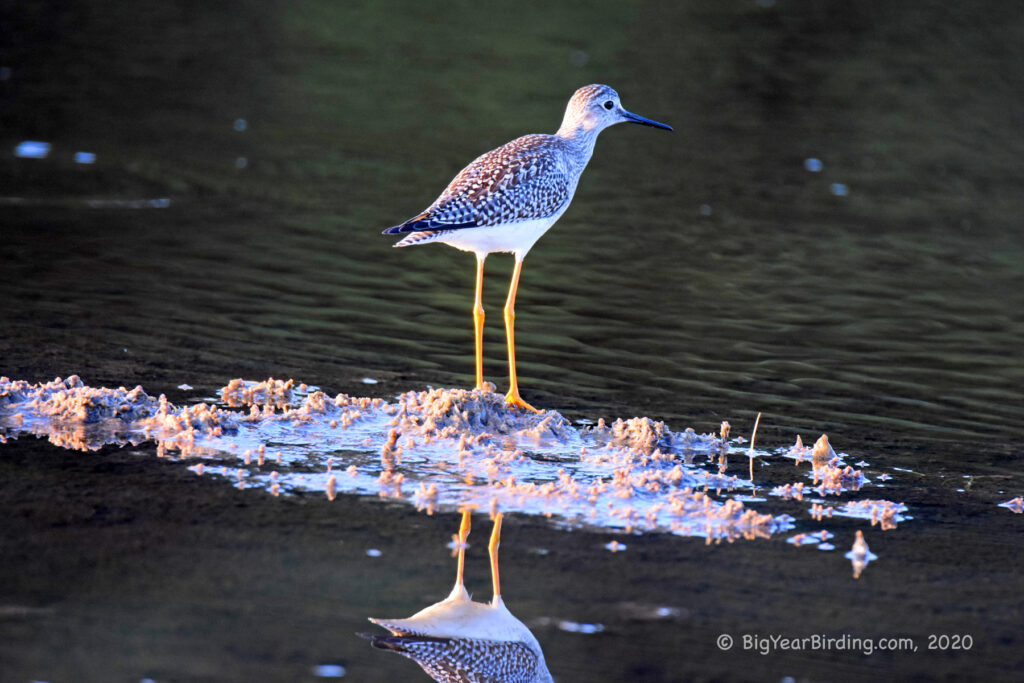
The Lesser Yellowlegs (Tringa flavipes) is a long-legged shorebird found across North and Central America. Adults typically measure between 9 and 11 inches in length, with a wingspan of 23 to 26 inches. They weigh between 2.8 and 4.5 ounces. Their long, bright yellow legs are one of their most distinguishing features, as well as their long, straight bills.

During the breeding season, Lesser Yellowlegs can be found in the bogs and wet meadows of the boreal forests of Canada and Alaska. They migrate southward in the fall, spending the winter in coastal marshes, mudflats, and lagoons in the southern United States, Mexico, Central America, and northern South America. During migration, they can be found in a variety of habitats, including flooded fields, mudflats, and freshwater marshes.
In addition to their bright yellow legs, Lesser Yellowlegs can be identified by their gray-brown back and wings, white underparts, and distinctive white eyebrow stripe that extends back from their eye. During flight, their white rump and tail are also visible. Juvenile birds have a more mottled appearance, with brown and white speckling on their back and wings.
Lesser Yellowlegs are highly vocal birds, with a distinctive “tu-tu-tu” call. During breeding season, males perform a display flight, flying in circles and calling to attract females. They are also known to engage in courtship feeding, where the male offers food to the female to establish a pair bond.

Overall, the Lesser Yellowlegs is a fascinating and adaptable shorebird, with distinctive field marks and an impressive migration. Their bright yellow legs and white eyebrow stripe make them a joy to watch and identify, whether in their breeding or wintering habitats.

